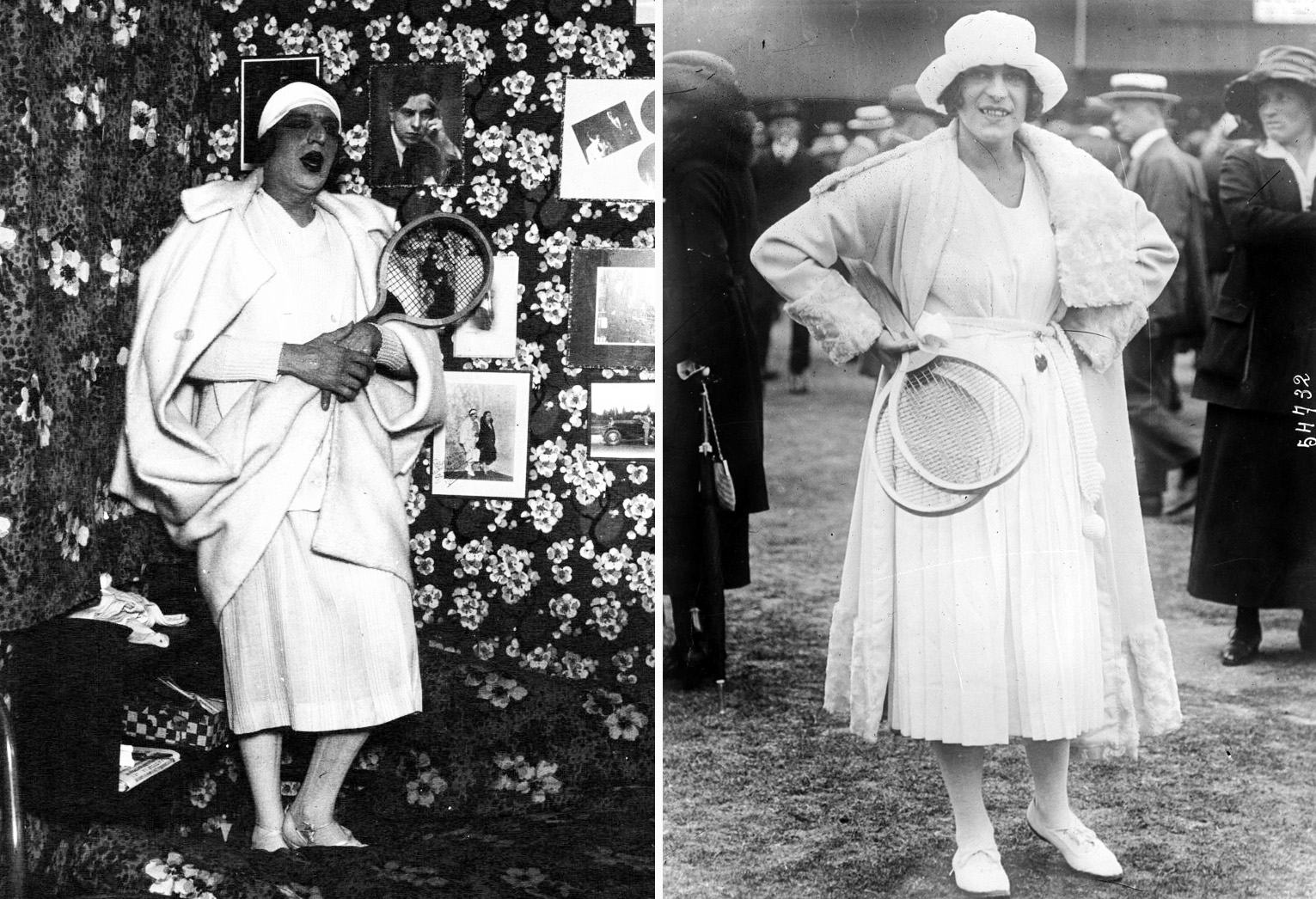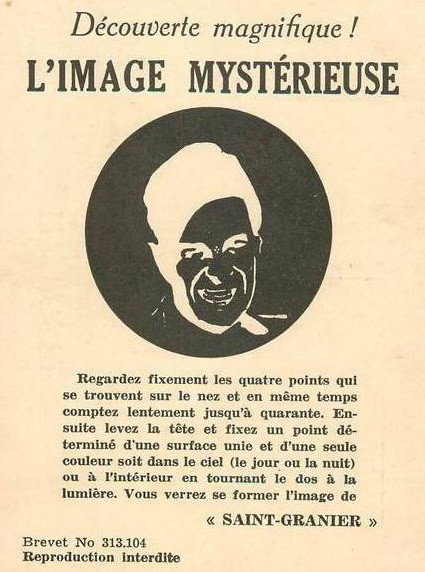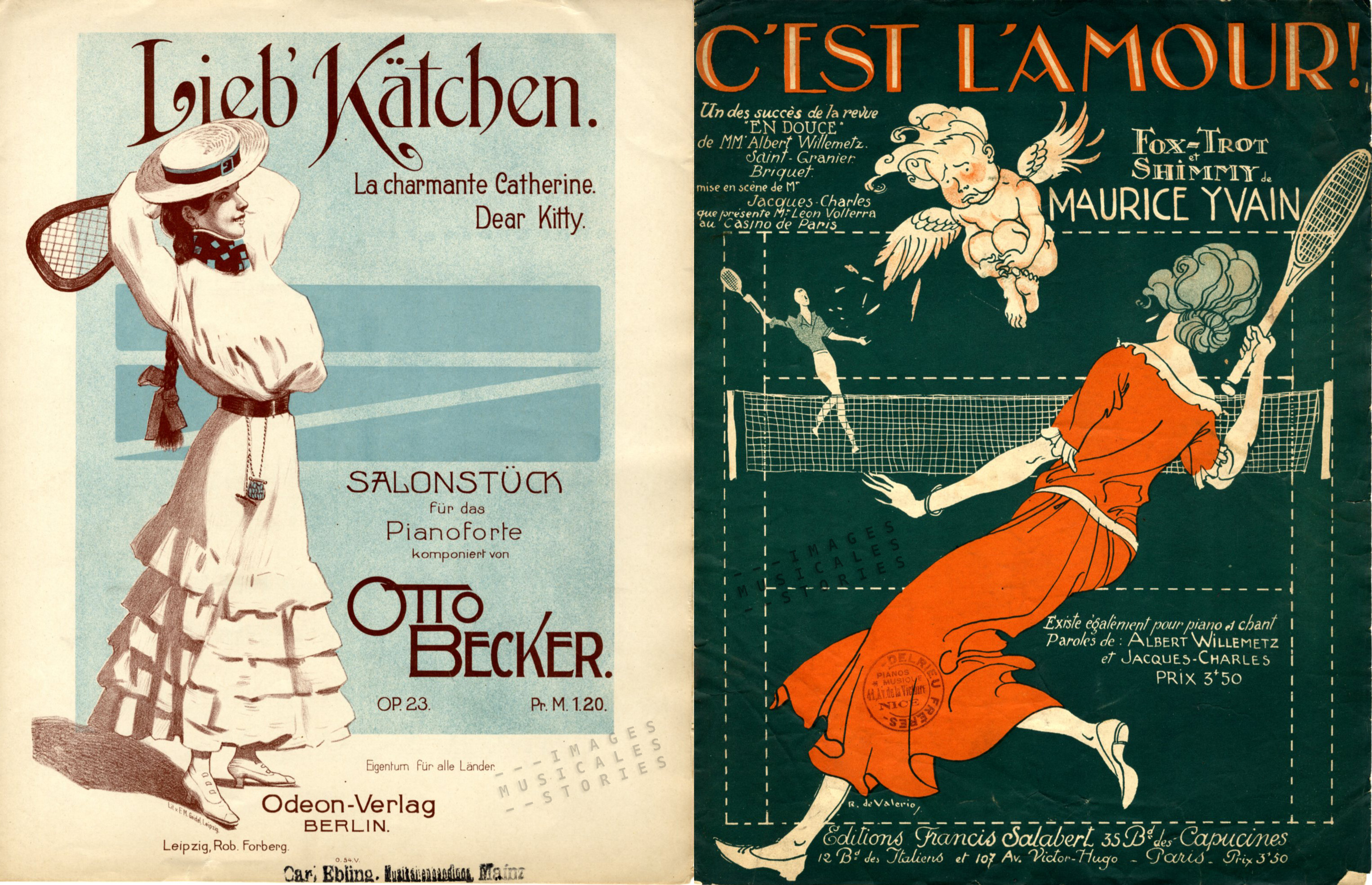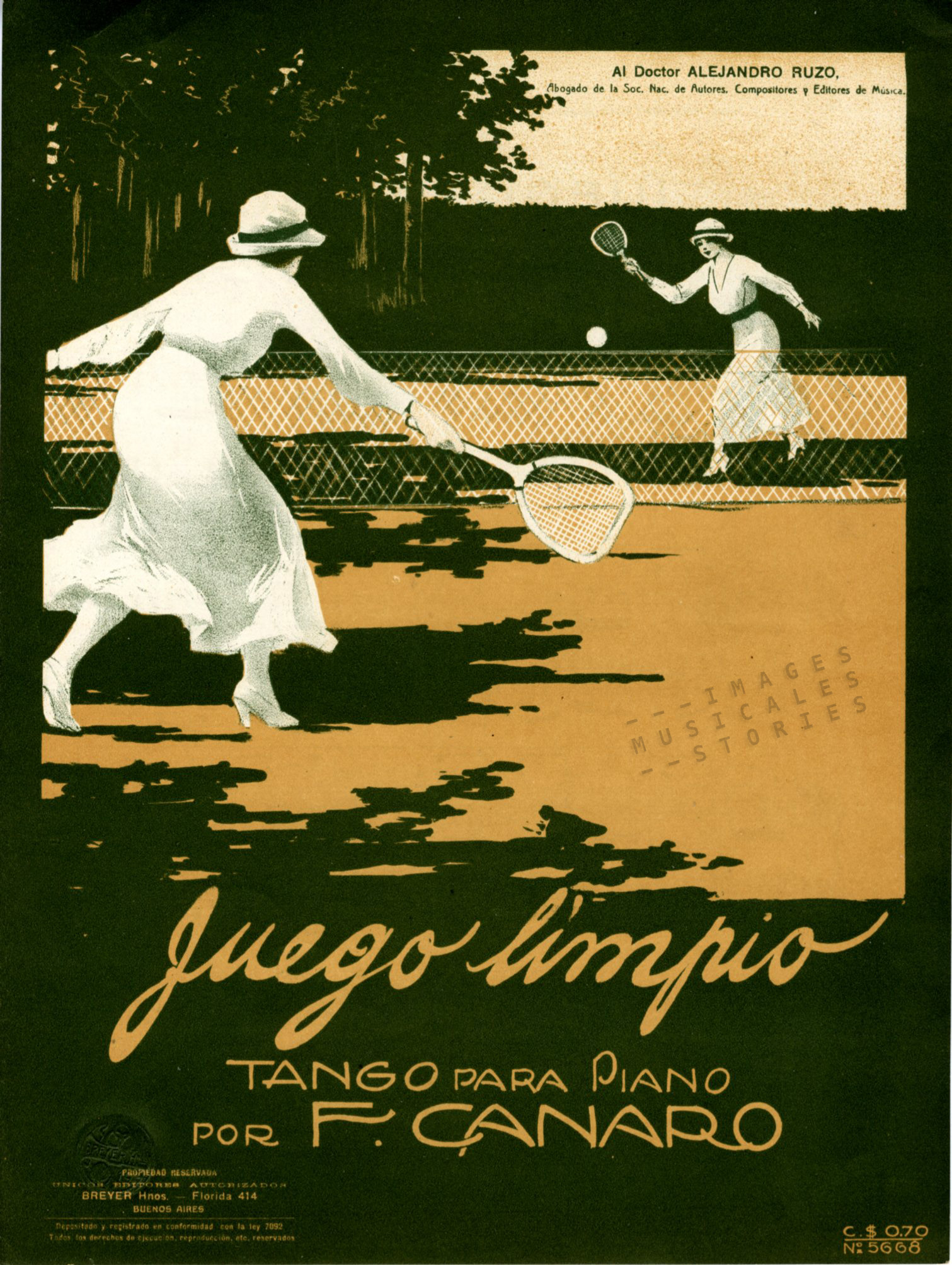
To avoid all confusion: it is not a picture of Suzanne Lenglen on this sheet music cover, but of the French singer Saint-Granier. In 1926 he made a ‘hilarious’ performance imitating Suzanne Lenglen in the Casino de Paris. We don’t know if it was extremely amusing, but his burlesque imitation at least looks kind of funny.

Saint-Granier (Jean de Granier de Cassagnac) was a nobleman from Gascogne who made a career as a journalist, writer, lyricist, singer and actor in Paris.
 For a hallucinating experience concentrate on the four dots on Saint-Granier’s nose, count to 40 and then stare at an even area. Slowly, mysteriously and straight from the Roaring Twenties, Saint-Granier will appear before your very eyes! This beats getting drunk.
For a hallucinating experience concentrate on the four dots on Saint-Granier’s nose, count to 40 and then stare at an even area. Slowly, mysteriously and straight from the Roaring Twenties, Saint-Granier will appear before your very eyes! This beats getting drunk.
The charismatic Suzanne Lenglen was named La Divine or the goddess by the French press and was one of the first celebrity athletes. She revolutionised and dominated women’s tennis from the end of the First World War until 1926. She was coached by her Papa and trained by male players on the Côte d’Azur. She played a man’s game, in an aggressive serve-and-volley style and serving overhead. Sometimes, during a tough game, a sip of brandy and a curse would propel Suzanne to victory. It helped her win six Wimbledon singles titles. Moreover during her career she only lost one match.

She was also a flamboyant and graceful player and in spite of her homely face she became a fashion muse. Suzanne Lenglen brought the glamour of the French Riviera to Wimbledon. In 1919 during her first appearance there she made it clear that the jazz age was on its way. Her opponent in the final, the seven-time Wimbledon champion and the title-holder, was dressed in an ankle-lenght skirt, with the shirt fastened at the wrists and neck and a corset underneath. Suzanne Lenglen won (albeit not without a struggle) in a short-sleeved frock reaching to the calves and her hair bobbed.

She would kick her legs high up in the air, not minding at all that one could see her pants or get a glimpse of a bare thigh. Instantly she became the goddess of tennis and an example for all flappers. Her dress code would be copied worldwide on and off the court. She usually made her entrance in a fur or fur-trimmed coat which she even showed off during breaks, regardless of the heat. Underneath she wore flimsy Art-Deco ensembles created by Jean Patou, stockings rolled to the knee held by a cerise garter, and a brightly coloured silk chiffon bandeau on her head.
An excerpt from British Pathé’s ‘How I Play Tennis – By Mlle. Suzanne Lenglen (1925)‘, a 16-minute silent documentary.

Apart from gossipy proposals from dukes, counts, earls and American millionaires, and contrary to tabloid reports of pending engagements with wealthy gentlemen, Suzanne never got married nor engaged. So she wasn’t lucky in love, nor in her later life: she died suddenly when she was only 39 years old.

Suzanne Lenglen was an enthusiastic dancer. She even claimed the fox-trot, the tango and her favourite, the shimmy, were excellent training for tennis. It was maybe this love for dancing together with her graceful acrobatics on the court that inspired Diaghilev and his Ballets Russes. His production Le Train Bleu by Jean Cocteau (scenario) and Darius Milhaud (music) staged a tennis player based on the elegant Mademoiselle Lenglen.
Re-staging of Le Train Bleu by the Paris Opera in 1992. Music by Darius Milhaud. Costumes by Coco Chanel.

Frank, dat zijn weer fraaie omslagen, bedankt !